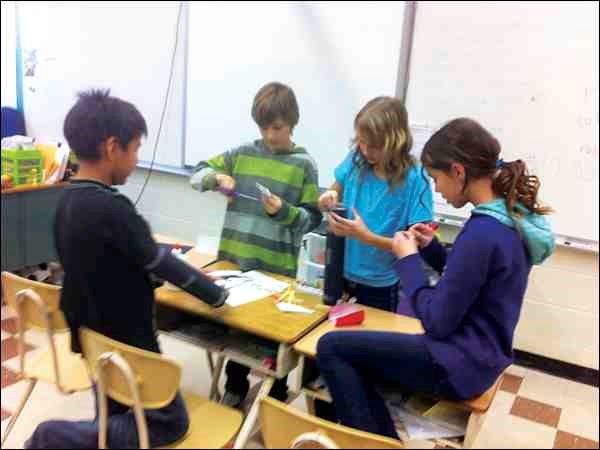If you walked into the Grade 4/5 class at Holy Family School, you would not often see the traditional rows of desks, or a teacher lecturing at the front of the class.
A variety of instructional strategies, used by their teacher, Carsey Sutton, has students stretching themselves in a variety of learning situations that include helping each other, inventing and building items and experiencing other cultures in the community.
Students might work independently, in pairs or might even instruct a group. Subatizing is a learning strategy that has a student lead a group in doing flash cards. It still requires speed and accuracy as does the traditional form of flash cards, but being student led allows students not only to learn from a different point of view, but it allows them to assist their peers, which again is a helpful learning strategy.
Students no longer just read about inventions in textbooks. In this classroom, inventing comes alive, as is the case on ""Engineer Fridays."
"Engineer Fridays (we are currently working on mechanical arms) are days we pretend we are engineers," Sutton explains. "We plan and design models of things like mechanical arms, and the kids actually build and test them.
Sutton explains she is the "banker" and the students have to "exchange money" for parts for their arms. They test them by grabbing and transporting a glue bottle with their arms.
She explains that students also work for extra marks for "looks" because they spoke about the impact on self-confidence when getting used to a prosthetic, or when looking different.
"They loved it!" explained Sutton, "And, they saw it as fun."
The Grade 4/5 students also get the opportunity to expand their classroom to other venues in the community. Students attended a presentation byaboriginal artist, writer and storyteller Carol Daniels, atthe public library.
"A group from Sakewew also danced," said Sutton, "and spoke to us about finding your passion to center you, bringing you closer to yourself and closer to God, the Creator. The kids loved it, and we participated in a Round Dance at the end."
While there are still times that lecture and notebook are important contributors to students' learning, more and more hands-on, existential experiences are being used in learning strategies, to best reach, and teach, our students. The smiles on their faces, and the focus on their tasks at hand would indicate that the strategies are successful.


.png;w=120;h=80;mode=crop)

